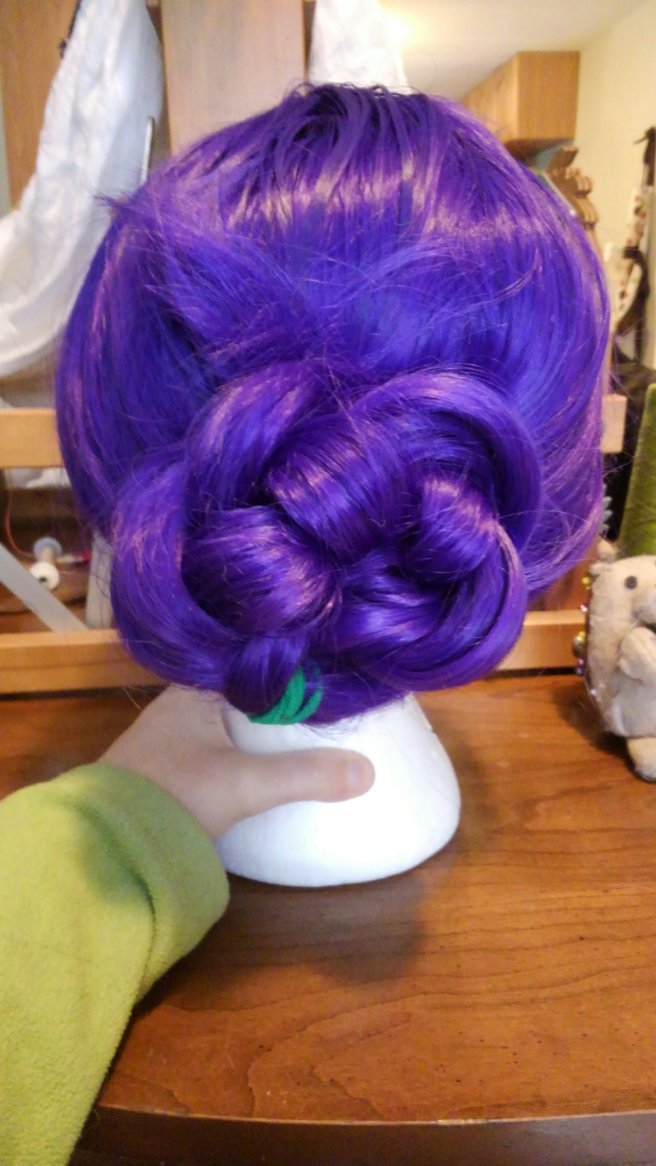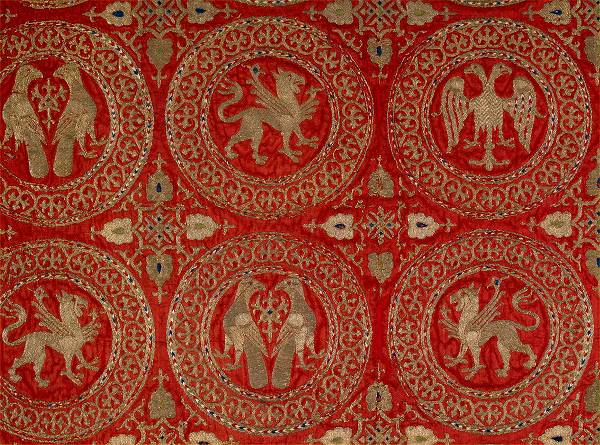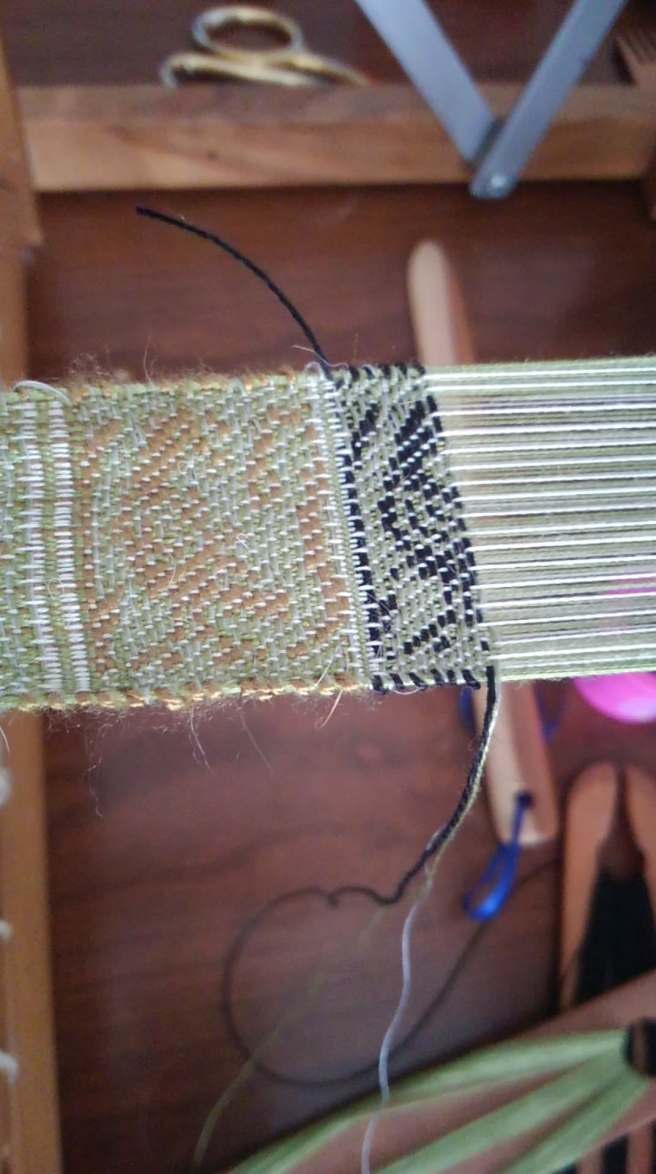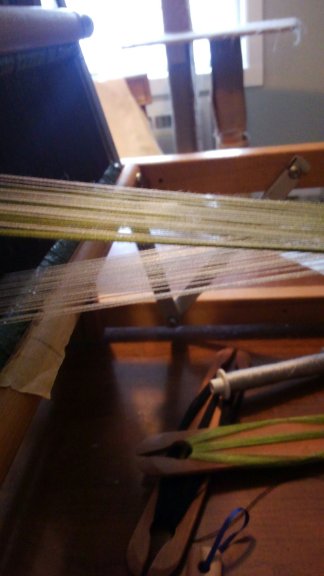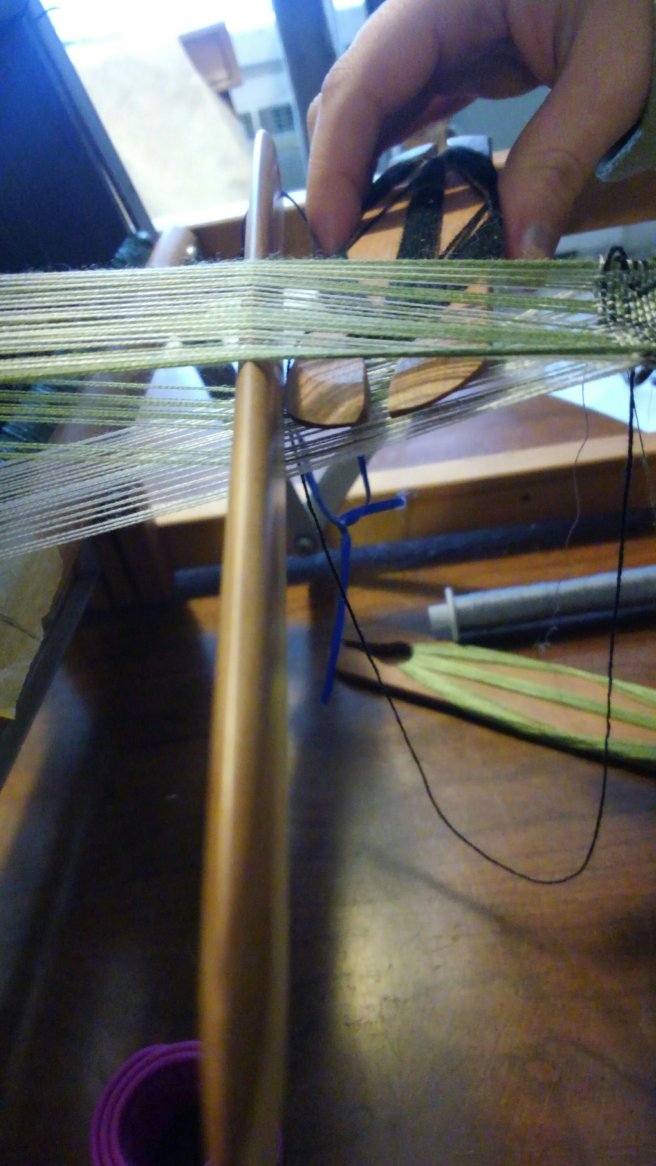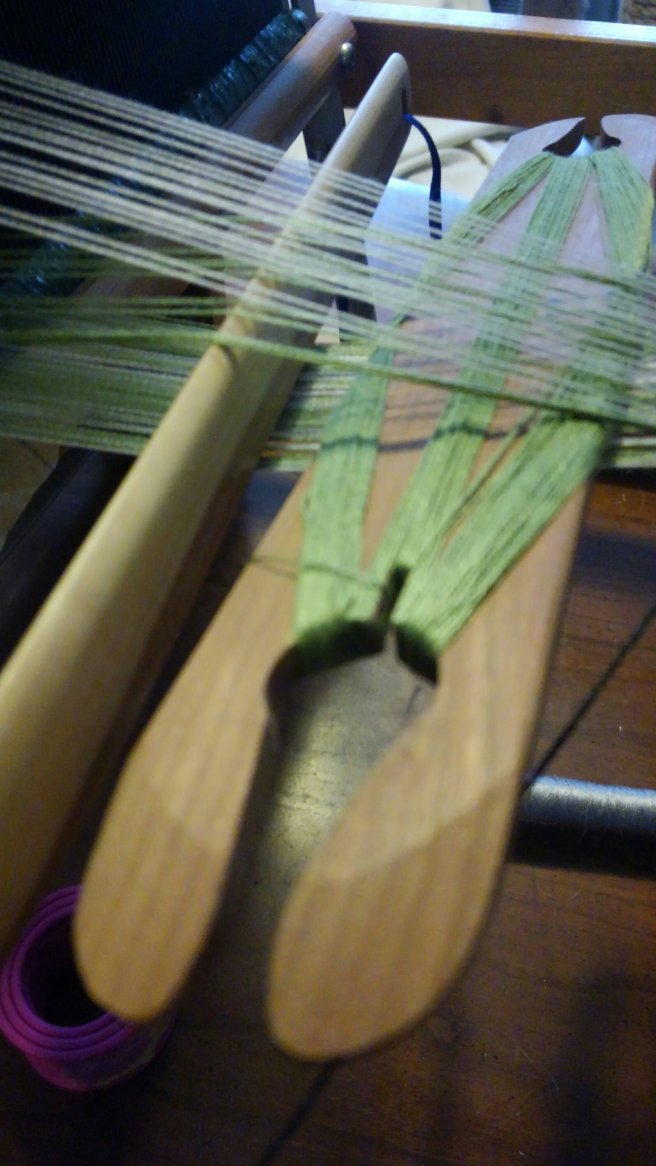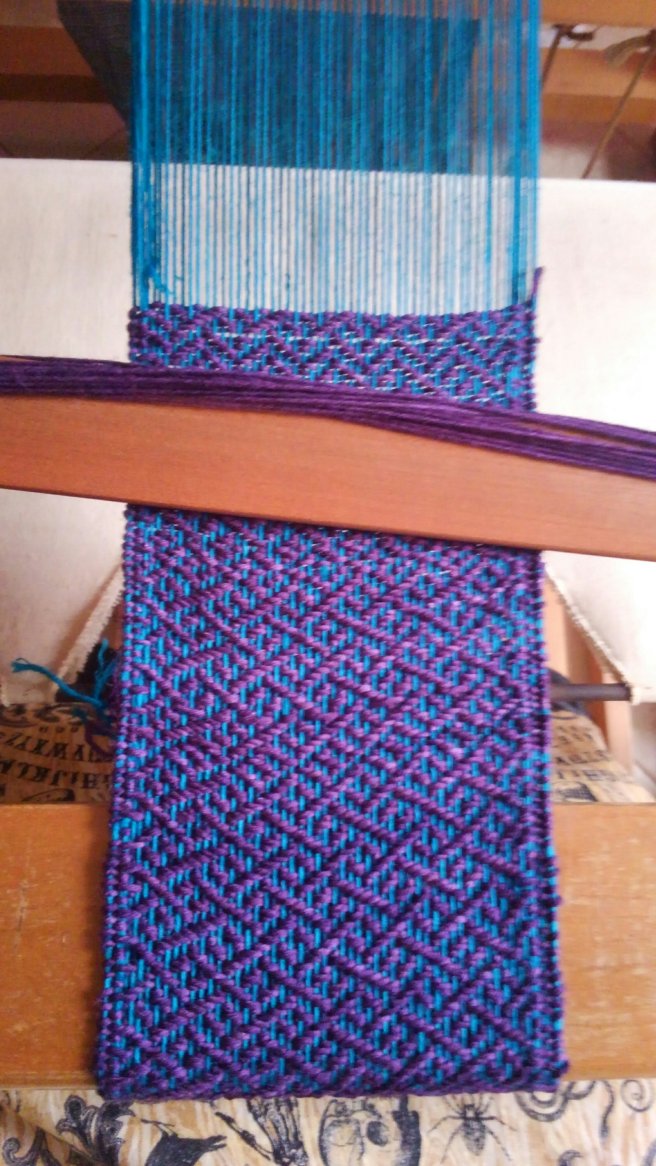As I said in my last post I was spinning for a rather large project. Here is the paper to go with the yarn for that project as it was presented this past weekend. This is not the full project and I will post that paper once the project is completed.
The purpose of this paper is to discuss my attempts at recreating an authentic Iron Age wool thread, as well as explain the differences in yarns produced on an Iron Age spindle vs a modern spinning wheel. All wool in this experiment was processed in the same manner and from the same fleece. The only altered variable was the tool used to spin the fleece into yarn. I will begin by explaining my choice of fleece, the steps used to process it, with archeological documentation for why I made the choices I did, and finish by comparing spindle spun to wheel spun yarn.
I am attempting to recreate an Iron Age yarn, like those that have been unearthed in Greenland and Birka. In order to get as close as possible to extant yarns I chose to work with a primitive sheep breed whose ancestors would have been available in Denmark and Greenland. Namely the double coated Icelandic sheep. It is, unfortunately, impossible to get a fleece identical to what would have been available in period. All sheep have undergone centuries of selective breeding to produce more favorable fleeces or meat, but primitive breeds are the closest we currently have access to.
I selected Icelandic specifically because of its dual coat. Greenland and Icelandic textiles, specifically those referenced in Woven into the Earth, show several extant cloths woven with the coarse outer coat used to spin the hard and smooth warp threads, with the shorter and softer undercoat used as weft. This serves several purposes. The most pressing being a cloth that is strong while still being warm and able to be fulled, or lightly felted. Using the top coat as warp reduces the chance of breakage, and the long staple length compared to the undercoat means a smoother, harder, yarn can be produced without additional effort.
I also needed a fleece that was cut from the sheep, rather than rooed or shed. There is a notable difference in the quality of wool depending on how it was taken from the sheep. Primitive sheep actually shed their fleece, alternatively it can be cut or rooed (pulled) from them at the end of the season. Modern sheep have lost this ability, making them more dependent on humans, but also producing longer staple fiber. Initially I was intending to find a fleece that had been rooed. However examining wool from Birka shows no root ends in the yarn, meaning the fleece had to be cut from the animal, not shed – therefore I went with a fleece that was sheared from the sheep.
These yarns are, on average, woven into fabrics that are between 14-22 ends per inch, or 30-50 wraps per inch for the warp threads for wool twills. Highly prized Vidmal cloth produced in Greenland has a higher weft density than warp density, and therefore has a weft one third to one half again as dense as the warp. For this project I have chosen to aim for the coarser end of Iron Age yarn, with a warp of 30 wraps per inch, and a weft of 45 wraps per inch.
For the actual fleece processing I purchased a raw (unwashed, uncombed) full Icelandic fleece from a breeder who does not coat their sheep. In the period I am attempting to recreate we have no documentation for sheep coating, therefore I wanted to avoid it. This meant the fleece I began work with was covered in dirt, vegetable matter, and dung.
To clean the fleece I opted to rinse it in the stream behind my house. We have later period references, mostly in art, of sheep being run through streams to remove the worst of the dirt prior to shearing. This practice continued in Australia and more remote parts of Northern Europe until the mid to late 1800s. Therefore it is reasonable to mimic this practice. To that end I placed chunks of dirty fleece in a strainer and dragged in through the running water. This allowed the water to flow through the fleece, and the dirt to be carried downstream. I then allowed the fleece to dry in the sun.
The benefit to this vs modern scouring methods is that quite a bit of lanolin was left in the fleece. This made the wool more sticky and difficult to spin, but also made it stronger and therefore will make the resulting yarn easier to weave and more water repellent.
After washing the fleece was dragged through wool combs to divide the top coat from the undercoat in order to produce the top coat warp threads, and undercoat weft threads. The top coat was then combed again in ensure all the fibers were lying in the same direction. This was to produce a worsted spun yarn. Worsted yarns are smoother, harder, and less warm than woolen spun yarns. The smooth and hard nature makes them perfect for warp threads, and indeed is the method of spinning most often seen in Iron Age textiles.
Here we begin the deviation in tools and processing. Up until this point the entire fleece received the same treatment in order to minimize variables and ensure the difference in finished yarn, if any, was due to which tool was used to spin it.
I was only able to achieve a worsted spun top coat yarn using the Iron Age spindle. My wheel could not achieve the amount of twist required with enough take up to wrap it around the bobbin. Therefore attempts at recreating an Iron Age warp yarn on a modern spinning wheel was a failure for me. My yarn kept either being too thick to be a proper replica, or pulled apart due to insufficient twist.
The spindle however allowed me more control over the twist, which meant I could achieve the thinner yarn without it falling apart. I was able to mildly over spin the long top coat fiber, so that when plyed the result was a strong, balanced, yarn that was consistent in thickness with extant finds.
I was able to produce a yarn with the undercoat on my spinning wheel. However the yarn produced was not even, nor was it fine enough to be considered a replica of the yarns found in Birka or Greenland. Adjusting the take up and spin speed did not correct the issue as the wheel needed to take the thread up faster than the correct amount of twist could be applied. The result is a very fluffy yarn that would be excellent for naalbinding or modern applications such as knitting, but would not produce the textiles found in Iron Age graves.
As with the warp yarn the issue of spin vs take up was solved when a spindle was used rather than a wheel. The spindle was able to produce singles consistent with those found woven into textiles in grave finds with far less effort than was applied attempting to recreate them on the wheel.
It is possible to create a thin enough single to fall within the acceptable size range using wool on this spinning wheel and get a consistent thread. Therefore it is not user error or being unfamiliar with wheel spinning that is causing the difference in yarn produced. However, that was achieved with commercially prepared top using modern fiber processing methods suited for hand spinning on a wheel.
Using fiber processing suitable to the Iron Age produces a fleece that is difficult to spin using a modern spinning wheel, but causes no such difficulties on a spindle. There is a marked difference in the yarns produced, even when controlling for all other variables. It is my conclusion, that in order to produce a textile that is on par with those from extant finds the yarn should be spun using a drop spindle.
Sources:
Barber, E.W Prehistoric Textiles. Princeton University Press. 1991.
Chisholm, Alec H. The Australian Encyclopaedia. 8. Sydney: Halstead Press. 1963. p. 86. Shearing.
Fournier, Jane and Nola. In Sheep’s Clothing: A Handspinner’s Guide to Wool. Interweave Press 1995.
Ostergaard, Else Woven into the Earth: Textile finds in Norse Greenland. Oxbow Books 2004.
Nosch, Marie-Louise, Feng, Zhao, and Varadarajan Lotika. Global Textile Encounters. Oxbow Books 2014
Strand, Eva A. Tools and Textiles – Production and Organisation in Birka and Hedeby. Viking Settlements and Viking Society Papers from the Proceedings of the Sixteenth Viking Congress. 2009.
Vedeler, Marianne. Silk for the Vikings. Oxbow Books. 2014.
Walton, Penelope Textiles, Cordage, and Raw Fibre from 16-22 Coppergate https://www.yorkarchaeology.co.uk/wp-content/uploads/2015/08/AY17-5-Textiles-Cordage-and-Raw-fibre.pdf
